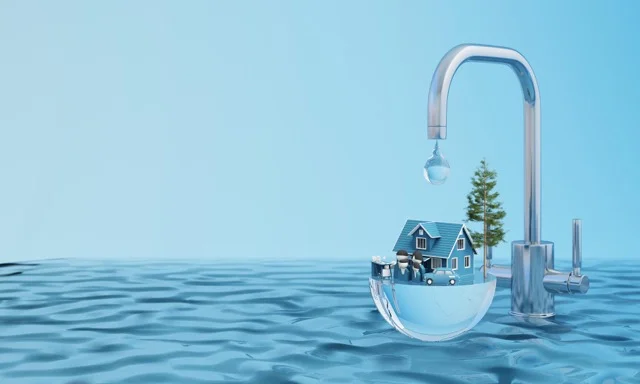What Does Reclaim Waste Mean?
What Does Reclaim Waste Mean?
Blog Article
The Greatest Guide To Reclaim Waste
Table of ContentsAll About Reclaim WasteWhat Does Reclaim Waste Do?4 Simple Techniques For Reclaim WasteThe 2-Minute Rule for Reclaim WasteSome Known Details About Reclaim Waste
Check out the kinds, incidents, and types of fluid waste. Residential sewage waste describes the waste and products from a property sewage-disposal tank. This kind of waste is created by people in houses, schools, and other buildings. This only consists of sewage-disposal tanks that have a drain area. The proper administration and disposal of domestic sewage waste require fluid waste to be moved to a sewer treatment plant where the appropriate approaches and equipment are related to detoxify and throw away waste.
Industrial waste usually includes possible threats, such as flammable materials or a mixture of liquid and strong waste products, and calls for a much more advanced and detailed disposal process. The disposal of industrial waste generally involves the filtration of waste prior to transportation to guarantee safe and correct disposal. Industrial waste is created from results and drainage of commercial procedures and manufacturing.
This type of waste can not use the very same sewage monitoring transport or procedures as septic or business fluids. The industrial waste management process calls for the inspection and screening of liquid waste before it undertakes the disposal procedure (liquid waste removal). Overflow waste is the fluid waste that comes from overflow and excess stormwater in extremely inhabited locations or cities
Overflow waste can trigger contamination and flooding if not dealt with properly. Guaranteeing proper waste monitoring can stop disasters and decrease ecological injury.
Our Reclaim Waste Diaries
Contact PROS Solutions today to discover our waste management and disposal solutions and the proper methods to take care of the fluid waste you generate.
(https://www.provenexpert.com/reclaim-waste/)Do you recognize what happens to your water when you end, flush the bathroom or drain the washing maker? No? Well, it deserves knowing. This so-called 'wastewater' is not just a crucial resource but, after treatment, will be launched to our land, rivers or the sea. Used water from toilets, showers, baths, kitchen sinks, washings and commercial procedures is called wastewater.

water utilized to cool down machinery or tidy plant and tools). Stormwater, a type of wastewater, is overflow that streams from farming and city areas such as roof coverings, parks, gardens, roads, courses and rain gutters into stormwater drains pipes, after rainfall. Stormwater streams neglected directly to regional creeks or rivers, eventually getting look at this now to the sea.
See This Report about Reclaim Waste
In Queensland, the majority of wastewater is dealt with at sewer treatment plants. Wastewater is transferred from residential or commercial websites via a system of sewers and pump terminals, recognized as sewage reticulation, to a sewer therapy plant.
The Department of Natural Resources recommends neighborhood federal governments about managing, operating and preserving sewerage systems and therapy plants. In unsewered locations, local governments might require householders to install specific or household sewage therapy systems to treat residential wastewater from toilets, kitchen areas, restrooms and laundries. The Department of Natural Resources authorizes making use of household systems when they are proven to be reliable.
The majority of stormwater obtains no therapy. In some new neighborhoods, treatment of some stormwater to get rid of litter, sand and gravel has started using gross pollutant traps. Wastewater treatment happens in four stages: Removes solid matter. Bigger solids, such as plastics and various other items incorrectly released to drains, are removed when wastewater is travelled through displays.
Wastewater after that moves into big tanks where solids settle and are removed as sludge. Grease and residue are skimmed from the surface area. Utilizes little living microorganisms called micro-organisms to break down and remove staying liquified wastes and great particles. Micro-organisms and wastes are included in the sludge. Gets rid of nitrogen and phosphorus nutrients that can create algal blooms in our rivers and intimidate aquatic life.
How Reclaim Waste can Save You Time, Stress, and Money.
Nutrient elimination is not available at all sewage therapy plants since it requires expensive specialist devices. It is ending up being more usual in Queensland. Clear fluid effluent generated after treatment may still have disease-causing micro-organisms. If this effluent is released into waterways such as rivers or the sea, the micro-organisms will ultimately die out.

A lot of wastewater flows into the sewerage system. Under the Act, local governments carry out authorizations and licences for environmentally pertinent tasks (Ages) including wastewater launches that could have a local effect.
Top Guidelines Of Reclaim Waste
Otherwise, samples are taken for laboratory analysis. Often numerous examinations are required to establish the levels of each of the different toxins such as oils, heavy metals and pesticides in water. Surveillance offers accurate info about water high quality and can validate that permit conditions are being met. The details gotten via surveillance gives the basis for making water quality choices.
Report this page